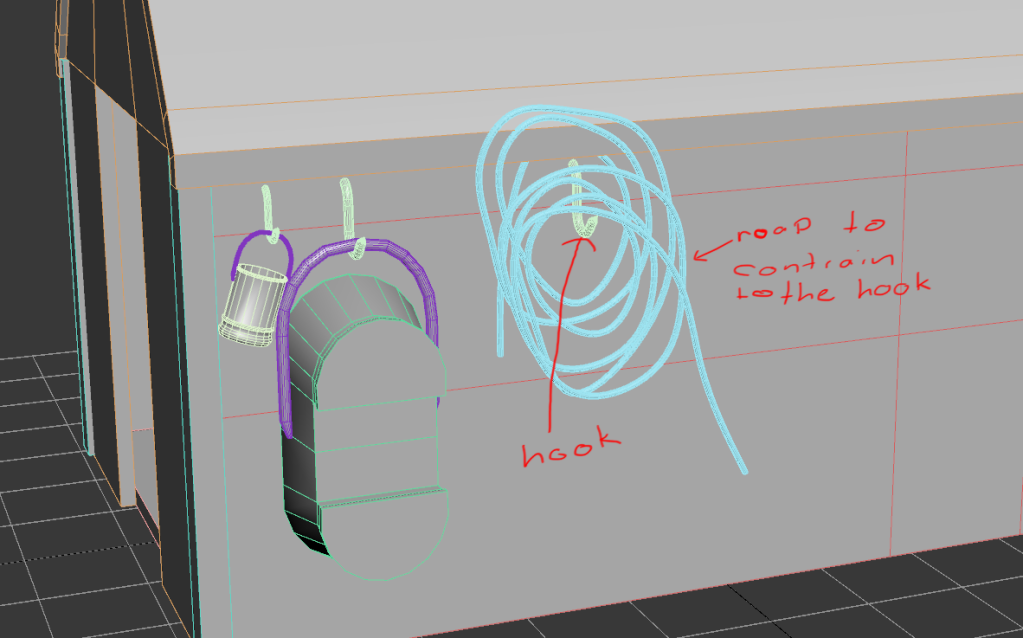The BRAWL² Tournament Challenge has been announced!
It starts May 12, and ends Oct 17. Let's see what you got!
https://polycount.com/discussion/237047/the-brawl²-tournament
It starts May 12, and ends Oct 17. Let's see what you got!
https://polycount.com/discussion/237047/the-brawl²-tournament
Physx help!!
Hi, i am trying to make a rope constrain to a hook with physx... problem is i have no idea how physx works... also would it be better to use cloth or physx? thanks and any tutorials on Physx or Cloth that could come in handy please post. here is an image of what i am working on: Forgive the spelling of Rope :poly124:


Replies
select the rope, make it ncloth
select the hook, make it passive (i.e. a collision)
select the vertices of the hook that you want to be constraint, toggle select the hook (select vertices, then go to object mode and THEN select the hook), nContraints -> point to surface
play with the dynamic attributes of the RopeShape, to make it stiff, makes sure you have a relative high compession and stretch resistance (actually its all about the comp/stretch ratio) and raise the damping value, to fit your wanted result.
There are tons of tuts out there that explain the attributes and ncloth in general, take a look at them.
In my experience, nCloth is pretty much "playing" around with the attributes until it behaves the way you want it to.
There are some presets saved in maya, try to use them for a jump-start and then tweak them towards your liking!
Hope that helped!
cheers
Well.. from what i know, physX is all about physics simulation of rigid bodies.
For instance:
PhysX was used for the split second game trailer.
A car racing down a street then an explosion from under the car sent it flying and crashing across the street into a building.
Destruction of all kinds:
Buildings collapsing
Craters in the ground
Ground cracking
A table with vases, glasses and dishes placed on it with a rock falling on it, breaking
everything etc. etc.
Thats some uses of it amongst others.
edit:
some more:
gravity related stuff of all kinds, stuff tilting, tipping over,
stuff rolling across the floor etc.
collision related stuff, something maybe being thrown against the wall etc.
But Cloth, Fluids, particles (e.g. explosions), hair, fur and the above mentioned, are all part of physX.